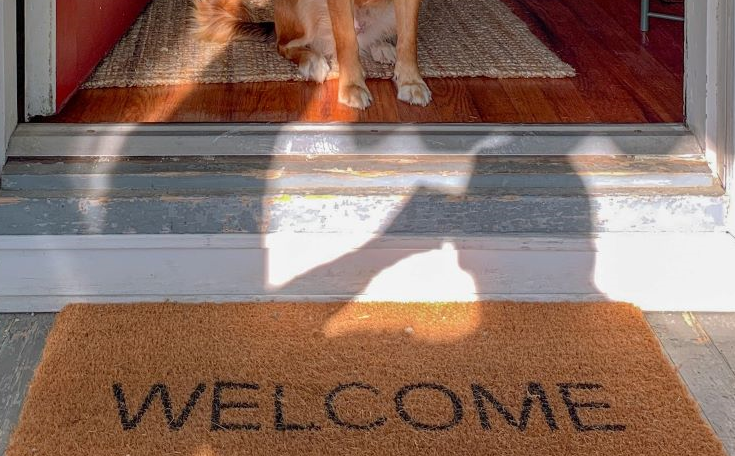Home maintenance projects can be stressful for homeowners and pets, but proper planning can significantly reduce risks to furry companions and workers.
When planning a home maintenance project, do you think about your dog or cat? Unsurprisingly, many pet owners don’t. Yet there’s a layer of responsibility here: Pets, like family members, can cause unexpected safety hazards when home services and renovations are underway. That can lead to accidents or legal challenges homeowners might not consider. And when precautions aren’t taken, their pets can also become injured or ill, which presents its own set of legal concerns.
These potential risks can lead to negative consequences but are usually preventable. Here are proactive steps you can take to ensure the safety of your pets, services providers, and home environment — as well as to prevent problems and any resulting legal entanglements.
Understanding Liability for Pet Owners
Pet ownership comes with responsibilities, and liability is a significant consideration during home maintenance or renovations. Homeowners can face legal and financial consequences if a pet is harmed during a project or causes harm to a worker. Here are some of the primary risks:
- Injury to pets: Home improvement projects might involve dangerous tools, pesticides, chemicals, and debris that pets should be kept away from. For instance, if dealing with a pest issue, pets must stay out of the treatment area, as they can absorb toxins through their mouth and nose, as well as their feet. No matter the project, consider boarding them or taking them out of the house for the day.
- Harm caused by pets: Even well-behaved pets can react unpredictably to the presence of unfamiliar service personnel or loud construction noises. If a pet bites or scratches a worker or makes a worker slip and fall, the homeowner could be held liable for medical costs or other damages.
- Property damage: Pets may cause accidental damage to work materials or equipment, leading to disputes over replacement costs.
Before work starts, check if your homeowner’s insurance covers pet-related incidents involving third parties. If not, consider additional coverage, especially if you have a large or untamed pet who often gets into things.
Safety Measures to Mitigate Risks
Taking steps to safeguard pets and workers during home projects is critical. These precautions protect all parties and reduce the potential for accidents.
- Secure pets: Confine pets in a safe, separate area of the home during maintenance activities. To comfort them, provide food, water, toys, and bedding in the room. Shut the door tightly to reduce the chance of escape.
- Supervise interactions: If pets must be near workers, supervise their interactions and place pets on leashes or in carriers.
- Choose pet-safe materials: When undertaking projects, opt for non-toxic paints, cleaning agents, adhesives, and anything else that could contribute to poor air quality.
- Secure hazardous items: Always store tools, chemicals, and sharp objects out of your pet’s reach, even if they generally don’t get into things they aren’t supposed to.
Further, clear communication with contractors or service providers can prevent unnecessary risks, so take the time to explain the situation to them. First, agree on rules for opening doors or windows to prevent accidental escapes. You can also ask them to use materials or methods that minimize risks to your pets.

Many home maintenance activities generate dust, fumes, or other pollutants that can harm humans and animals. Poor air quality can result in health risks for humans, ranging from slight throat irritation to severe chronic health issues, as well as pets. Consider investing in an air purifier to maintain a healthier environment during and after the project.
Legal Rights and Responsibilities
This two-pronged approach addresses liability from the most essential angles: your homeowner’s rights and responsibilities toward your pets and service providers.
As the homeowner, you have the right to set rules for workers regarding the presence of pets and access to certain areas of your home. Service agreements spell out homeowner and contractor legal rights and responsibilities, so review and negotiate the terms, ensuring they include pet safety considerations. For example, you can request that contractors notify you before using materials harmful to animals.
Do pets have legal protections like humans? While laws vary by location, pets are generally considered property under the law. However, some jurisdictions impose specific protections for animals in the care of service providers. Be aware of those laws and keep thorough records, including contracts, receipts, and photographs, to support potential claims if a dispute arises.
Negligence Claims After Pets or Workers Are Harmed
Awareness of the legal aspects prepares you to address potential issues during home maintenance activities. If a worker’s actions directly harm your pet, you may be able to pursue compensation for veterinary bills and related expenses.
On the other hand, dog owners could be liable for injuries their pets cause if:
- The owner knew their dog had the tendency to cause an injury.
- A state statute holds the owner responsible.
- The owner’s unreasonable carelessness caused the worker’s injury.
Home maintenance projects can be stressful for homeowners and pets, but proper planning can significantly reduce risks to furry companions and workers. Understanding potential liabilities, implementing safety precautions, and communicating effectively with service providers can create a safer, more secure environment and shield you from unnecessary legal disputes.


Join the conversation!